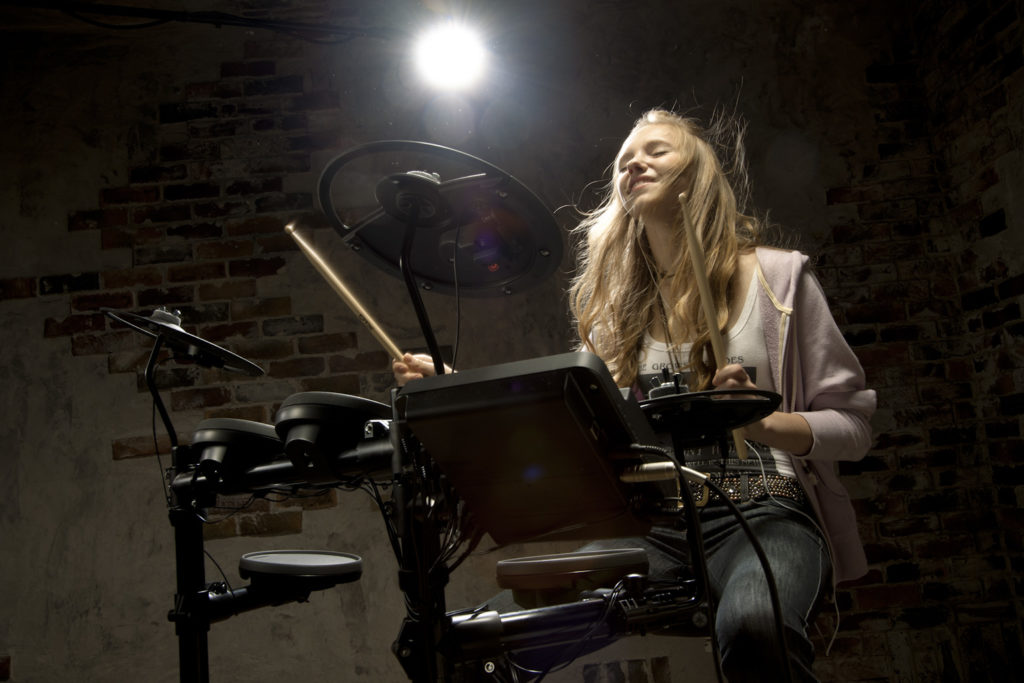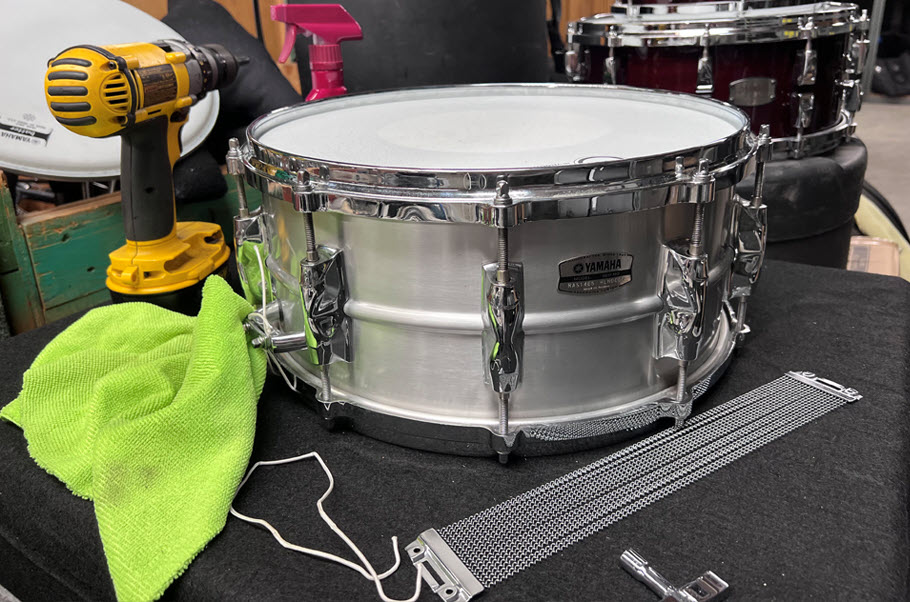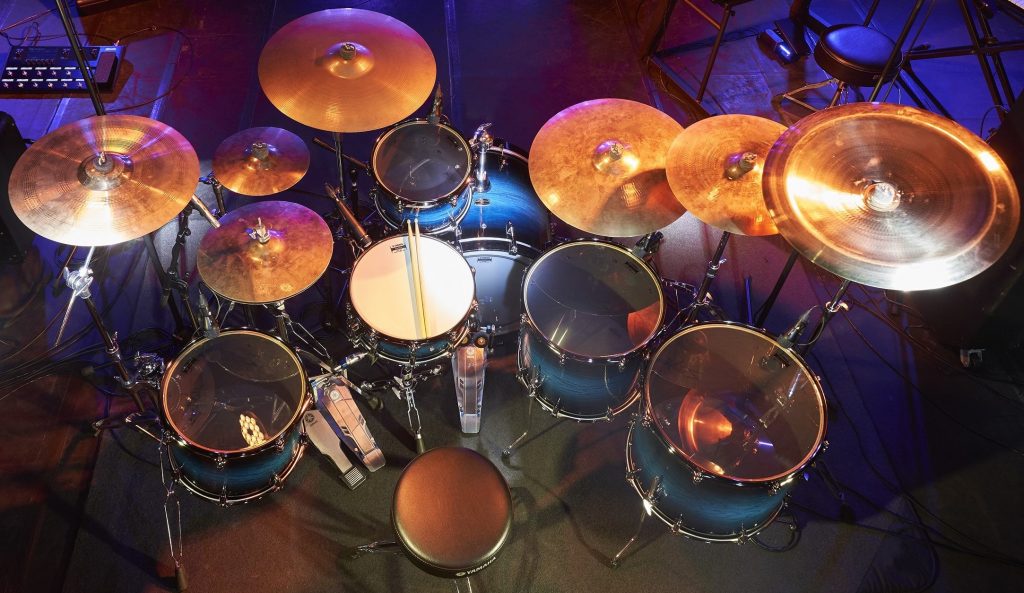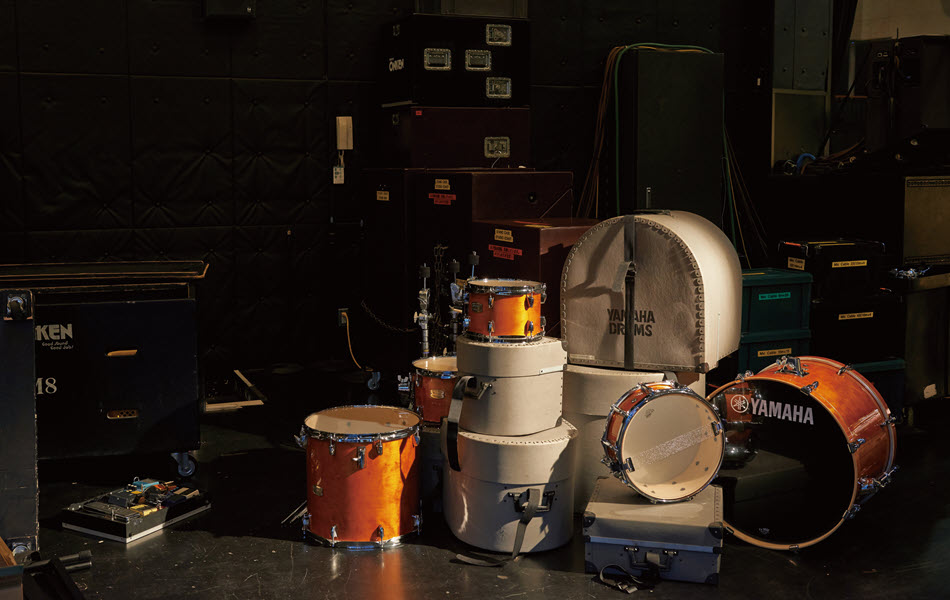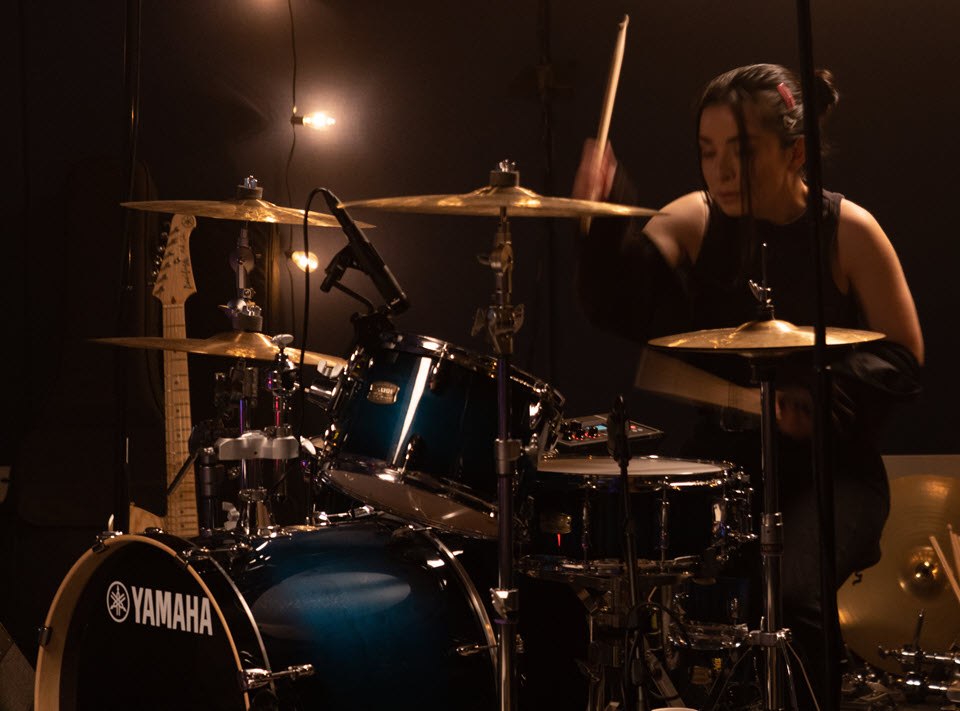Live Drumming Is Back: Tips for Gigging with Electronic and Hybrid Drum Kits
Here’s what you need to know about using a Yamaha DTX6 or EAD10 onstage.
It’s time to get back on that stage again!
Gigging with an electronic or an electronic/acoustic “hybrid” drum kit is a little different from performing on a fully acoustic kit, but it’s a great way to treat your audience to a large variety of drum and percussion sounds, bringing an extra dimension to your performance. Here are some tips for ensuring a successful live gig with a Yamaha DTX6 Series electronic kit, or by using a Yamaha EAD10 with your acoustic drums to create a hybrid set.
Hear, Here
By using an electronic drum kit, you’ll have access to a large number of drum sounds wherever you play, without the need for expensive microphones and stands … plus you’ll have total control over the volume of the kit. All Yamaha DTX6 Series electronic drum kits come with a DTX-PRO module, which is loaded with hundreds of high-quality, professionally recorded drum and percussion sounds that can be recalled instantly.
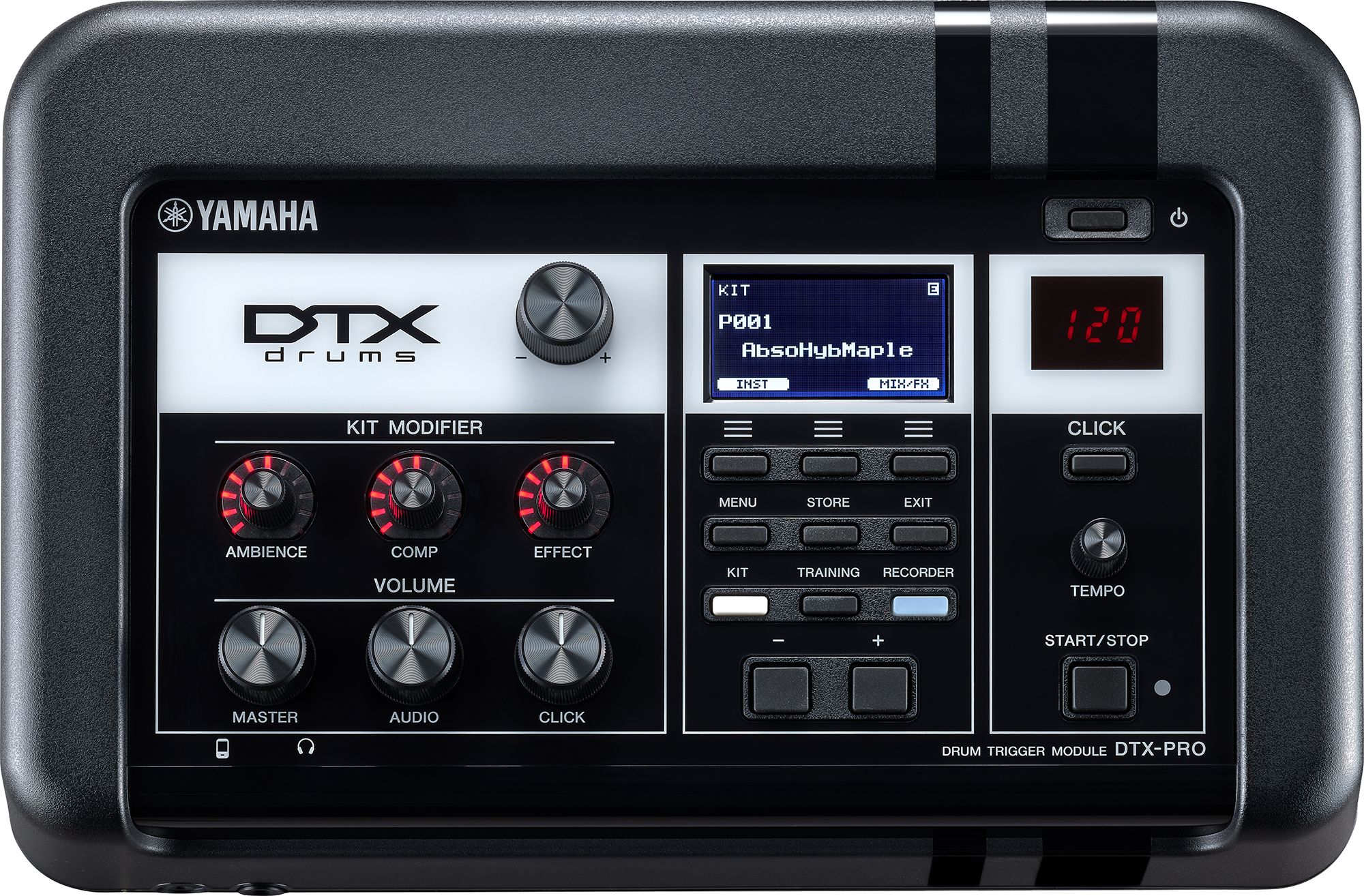
The biggest difference in gigging with an electronic kit versus an acoustic kit is that you’ll need a way for you and your bandmates to hear the drums onstage. Yamaha DBR Series powered speakers are great for this purpose because they can be positioned vertically for use as PA speakers or placed horizontally on the floor for use as wedge monitors.
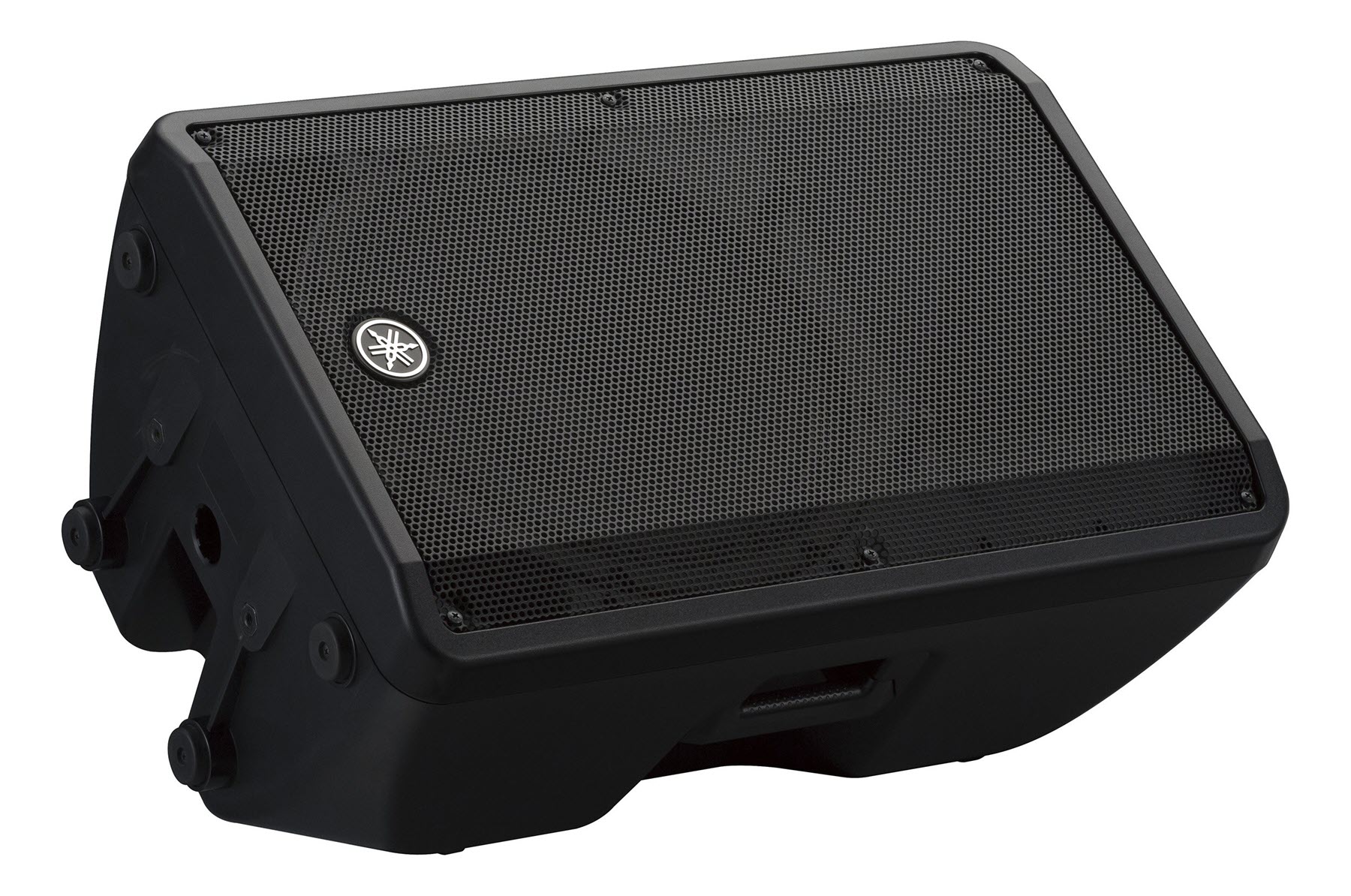
The low-frequency response of a speaker has a big impact on the sound of kick drum and toms. Generally, larger woofers have better low-frequency response, so the DBR12, with its 12-inch woofer, or the DBR15, with its 15-inch woofer, are good choices for reproducing drums. If you really like your low end pumping on stage, consider adding a powered subwoofer such as the compact Yamaha DXS12mkII, which can generate bass down to 42 Hz, or the heftier DXS18mkII, which goes all the way down to a chest-thumping 32 Hz.
What’s the Connection?
You’ll get maximum flexibility by connecting the audio output from your electronic drum module to a line input on the PA mixer, and then using an aux output to send audio from the mixer to a wedge monitor, headphones or in-ear monitors. This ensures that you’ll be able to hear the drums in your monitor along with a mix of other instruments or vocal microphones. To learn how to use aux sends to create separate monitor mixes, see this blog post.
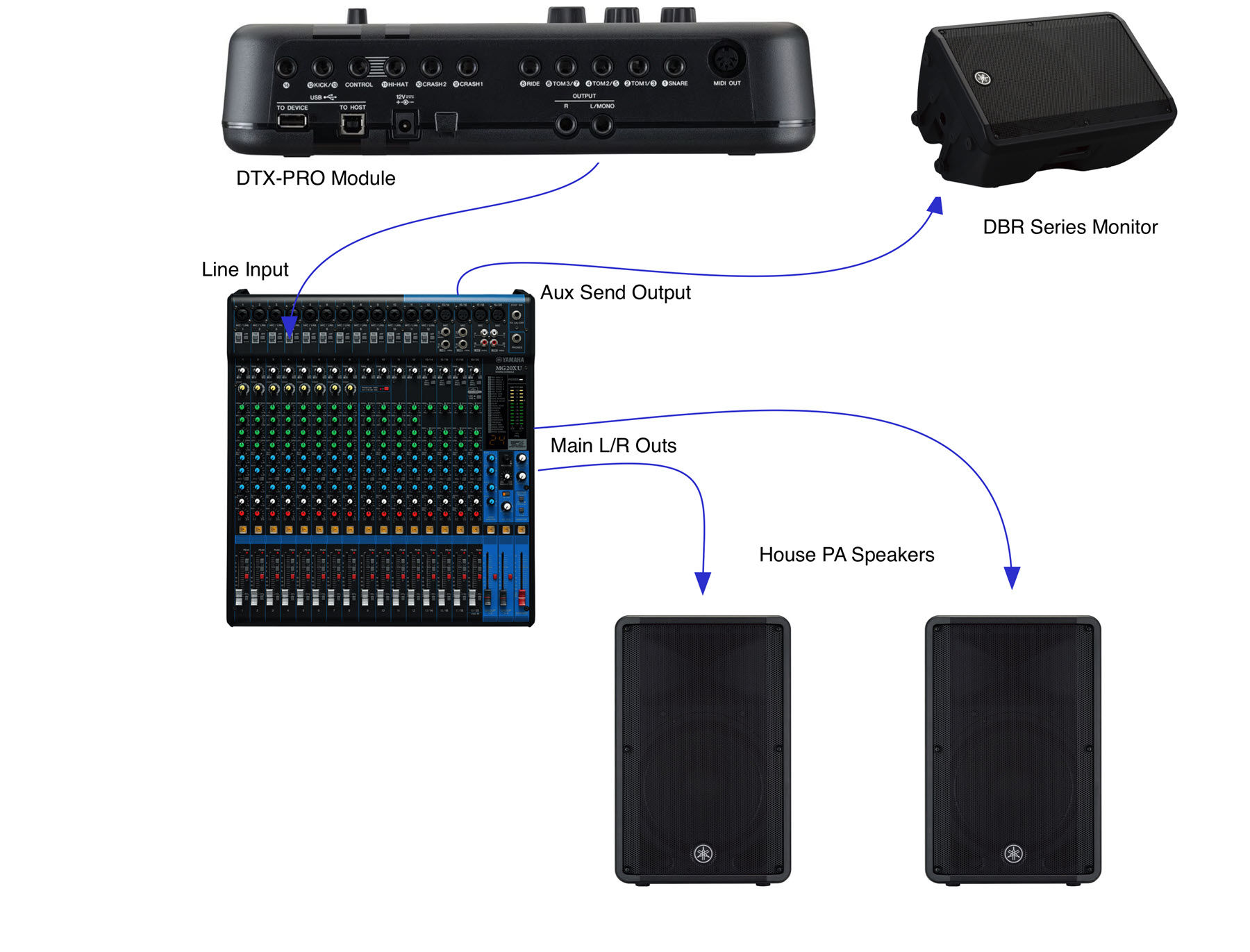
EAD10: Expand Your Palette
The Yamaha EAD10 Electronic Acoustic Drum Module instantly transforms your acoustic drum set into a hybrid kit. All you have to do is mount its Sensor Unit (which contains a pair of high-quality condenser microphones and a kick drum trigger) on your bass drum hoop. The microphones capture the entire kit, and the kick trigger can play any of the hundreds of drum or percussion sounds built into the EAD10 instrument library.
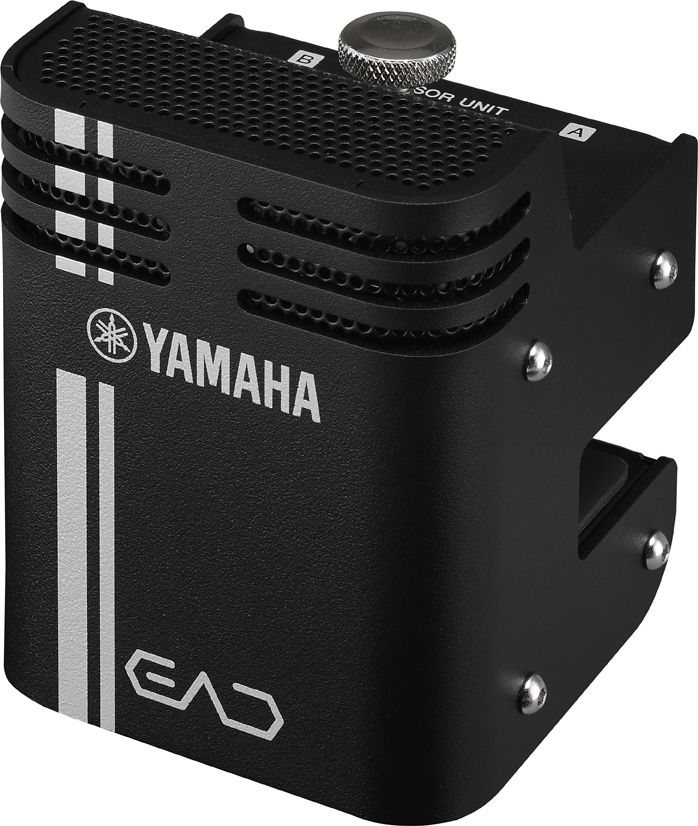
Multi-zone snare and tom trigger inputs on the EAD10 accept the output from a clip-on drum trigger such as the Yamaha DT50S, or from Yamaha XP Series and TP Series drum pads. Attaching a DT50S makes it possible to layer electronic sounds with the acoustic sound of the drum, while XP or TP Series pads permit you to expand your acoustic kit with electronic percussion, cymbals or effect sounds.

A big difference between performing with the EAD10 and an electronic kit is that you don’t need a monitor system in order to hear your acoustic drums onstage — though you will need a monitor to hear triggered sounds and effects. You’ll also need to connect the EAD10 to the PA system (the same way you’d connect a DTX-PRO module, as described earlier), so the audience hears the EAD10 microphones as well as the triggered sounds.
Secret Weapon
One of the great things about playing Yamaha DTX6 Series electronic drums or a hybrid kit with an EAD10 is that you’ll have control over the mix and be able to add effects to your drums. However, understand that the mix you’ve been hearing in your headphones while practicing may not sound the same when the module is played through a big PA system. For example, you may find that the kick or toms are very loud compared to the rest of the kit when heard through a PA. That can happen when the headphones you’ve been using for practice don’t have great low-frequency response, causing you to compensate by making the kick and toms louder; or, if the headphones lack clarity in the high frequencies, the snare EQ may be too bright or may have more reverb than necessary.
This is where the recorder function on the EAD10 and DTX-PRO is your secret weapon: simply record yourself playing for a few minutes onto a flash drive during practice or rehearsal, then during sound check, play the recording back over the PA speakers. Walk out into the room to listen: you’ll be able to make better judgements about the mix, EQ and effects, and you can even have the band play along with the recorded drums to check the balance between instruments.
By the way, the DTX-PRO lets you build 200 User Kits, and the EAD10 offers 200 User Scenes, so you’ll be able to keep your practice settings while creating new Scenes or Kits for playing live.
Using Pre-Recorded Tracks
The EAD10 and DTX-PRO provide several different ways to play live shows with pre-recorded tracks. A laptop running DAW software can be connected to the TO HOST port, or you can transfer a stereo mix of the tracks to a USB flash drive and use the internal recorder to play files directly from the drive. A third option is playing audio from your phone or MP3 player into the EAD10 or DTX-PRO AUX IN jack. Using your phone or a flash drive is a convenient way of working because it reduces setup time and eliminates the need to bring a computer to the gig. The volume of the tracks can be balanced with the volume of the drums using the Audio/Click control knob on the EAD10 or the Audio control knob on the DTX-PRO.
In situations where you need to play along with a click, the EAD10 and DTX-PRO have the ability to route the click only to the headphone output, so you can listen to the click in your headphones while preventing it from being heard by the audience.
Effects
One of the great things about playing DTX6 electronic drums or an EAD10 hybrid kit is that they have a wide variety of built-in effects, including Reverb, Delay, Flanger, Phaser, Modulation and Compression. These effects can be used to enhance or change the sound of your drums.
Accessing effects on the DTX-PRO is easy using its Kit Modifier section, which has separate knobs for control of Ambience, Comp (compression) and Effect: Simply turn the knobs to dial in the sound you want.
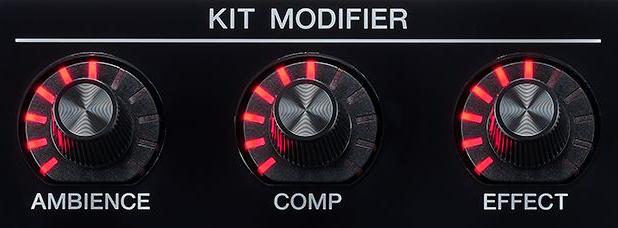
The EAD10 also allows instant access to effects from the front panel, with dedicated controls for Reverb, Effects and Trigger (volume of the triggered kick sound).

Note that in both the EAD10 and DTX-PRO, the function of the Effect knob depends upon the preset scene loaded into the unit. To demonstrate, here’s an audio clip of drums played with the EAD10 preset scene P001 “Arena”:
In this scene, the Effect knob controls a compressor. Compare the previous clip with the next one, where the Effect knob has been turned up to add compression. You can hear the drums get louder, and the volume of the kick drum becomes more consistent.
Turning down the Reverb produces the considerably less interesting sound heard in this next clip:
And here’s how the drums sound with the Effect (compressor) and Reverb knobs all the way down:
As you can hear, changing the Effect or Reverb controls in a preset scene drastically changes the sound of the drums and offers a wide range of creative options.
Playing electronic or hybrid drums onstage requires a bit of planning, but it gives you the ability to deliver a wide range of acoustic and electronic drum and percussion sounds — all at the touch of a few buttons. It’s an approach worth exploring as you get back into live gigging!
Check out these related blog articles:
Get More from Your EAD10 with V2.0 Firmware
Click here for more information about Yamaha DTX6 Series electronic drum kits.
Click here for more information about the Yamaha DTX-PRO module.
Click here for more information about the Yamaha EAD10 acoustic electronic drum module.










